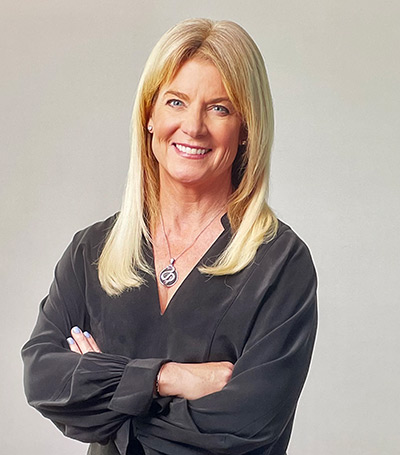The interview below is part of an ongoing effort by McGuireWoods to profile women leaders in private equity (PE). To read previous profiles, click here. To recommend a woman for a future interview, email WPEF@mcguirewoods.com.

Dianna Carr-Coletta is a managing director and partner in PGIM Private Capital’s alternatives direct lending group. Prior to this role, she was a managing director leading the firm’s corporate and project workout team and oversaw the management and restructuring of nonperforming investments. Carr-Coletta also served as a senior vice president in PGIM Private Capital’s Chicago corporate finance group.
In this role, she led a team responsible for marketing, originating and managing private placement, mezzanine and structured equity investments in Michigan and Wisconsin, with prior geographies that also included Southern Ohio and Kentucky.
Carr-Coletta received a B.A. from Michigan State University and an MBA from Northwestern University’s Kellogg School of Management.
Q: What drew you to the finance sector, particularly your role in finance?
Dianna Carr-Coletta: When I was in college, I enjoyed working with numbers and decided I was going to go into business, but I knew I didn’t want to be in accounting. Finance sounded more like the creative side of accounting, so I went down that path.
As I got more into finance, I started working with companies that were trying to find capital structures, and I loved it. I was able to learn about many different industries. I enjoyed partnering with the owners, CEOs and CFOs of those companies to determine the right type of capital they needed to achieve their strategic goals.
These companies were all different — small, medium and large family-owned and privately owned businesses — but all had important roles within their communities. It was great to partner with them and help them succeed in achieving their strategic goals.
Q: What significance does increased female representation hold for the finance industry?
DCC: In the asset management business, which I’m in today as an investment committee member of a private credit fund — and all businesses — the ability to outperform peers is rooted in diversity. Diversity of gender, race, background, education all play an important role.
With regard to gender, I believe women and men approach things differently. The ability to have both of those perspectives when you’re working through a process and having that diversity of thought allows for better investment decisions.
There are many studies that demonstrate that diverse leadership teams outperform their peers from a profit perspective and overall performance, and I believe that holds true in the asset management industry. When you’re trying to set yourself apart from all the other fund managers out there, you need to have diversification. More female representation is a good place to start, but there are a lot of different types of diversity that help with outperformance.
Q: What are the primary obstacles confronting women in finance today, and how would you advise overcoming them?
DCC: Many women are entering finance. If you look at the finance world today, the percentage of women in entry-level positions is 52% versus men at 48%, according to McKinsey. It may be surprising to see the data slightly skewed toward women right now at entry-level positions.
Unfortunately, the biggest obstacle is that as women progress through their careers in finance, they start leaving the industry. The concept of the glass ceiling has been replaced with what McKinsey calls the “broken rung.” I see this a lot in finance and other industries. It’s important to figure out how to repair this rung and keep women from leaving.
From 52% women in entry-level positions in finance, the number in the C-suite falls to less than 30%. This tells us that more work must be done to keep these women in the workforce. There are a number of contributing factors to why women are leaving, but it is largely about flexibility in the workplace. Everyone has responsibilities outside of the workplace, but most of them continue to fall on women.
Younger generations are doing a better job with the sharing of responsibilities between men and women. But for the most part, family and household work still fall more on women.
As a result, there is sometimes a perception that women can attend to responsibilities at home or travel for work, but not both. They can certainly do both, but they need flexibility to achieve that balance, and they need to be given that flexibility so they remain in the workforce.
Q: What’s a personal experience that underscores the value and impact of women’s representation in finance?
DCC: The No. 1 topic being talked about in my industry is attracting talent. If a woman is in the market to join a company, she is going to look at the composition of its leadership. If she doesn’t see a woman there, she’s going to have a challenging time picturing herself at that company.
In my experience, I’ve been fortunate to have women mentors in leadership roles, so I saw myself in these roles. I am proof you can be a woman and a leader in finance and asset management. I raised five children, I’ve had a successful career and I’m on the senior leadership team. I achieved all of this because I had the support of my bosses — men and women — and support from mentors, colleagues and the overall organization.
I am committed to remaining at my firm to ensure that support remains in place for women coming up the ladder so they don’t experience that broken rung. That rung can be repaired through flexibility and understanding. Firms with the right practices in place and, more importantly, buy-in for these practices firmwide should have an advantage in attracting the best talent.
To contact Dianna Carr-Coletta, email dianna.carr@pgim.com.